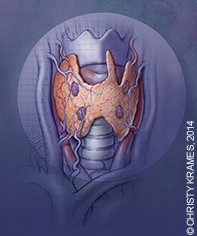Peer Reviewed
Feature Article Endocrinology and metabolism
Primary hyperparathyroidism: who, when, why and how to manage
Abstract
Primary hyperparathyroidism is typically diagnosed as an incidental finding in patients who are still asymptomatic. Management is usually by parathyroidectomy, ideally by focused minimally invasive surgery, but medical therapeutic options exist if surgery is not indicated.
Key Points
- Primary hyperparathyroidism (PHPT) is the most common cause of hypercalcaemia presentations in primary care.
- Diagnosis is made by an elevated serum calcium level together with an elevated or inappropriately normal parathyroid hormone level.
- Most patients with PHPT are asymptomatic at diagnosis.
- Elevated parathyroid hormone levels with normocalcaemia is most often due to inadequate dietary calcium absorption and/or vitamin D deficiency.
- Parathyroidectomy is recommended for patients with symptomatic PHPT and for asymptomatic patients who are at risk of developing complications.
- Imaging studies (sestamibi scan, ultrasound, CT scan) may be useful for preoperative localisation rather than as a diagnostic modality for PHPT.
- Medical therapies exist for managing nonsurgical candidates with PHPT.
Picture credit: © Christy Krames, 2014.
Purchase the PDF version of this article
Already a subscriber? Login here.

